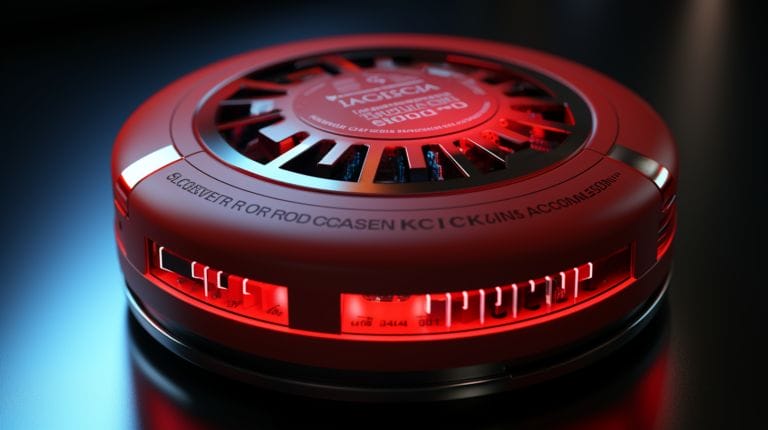How Many Lumens in a 100 Watt Bulb: Choose the Right LED
When considering how many lumens are in a 100 watt bulb, we often overlook the advancements in LED technology that have revolutionized the way we illuminate our spaces. The correlation between lumens and watts is not just a numerical relationship but a gateway to making informed choices that can impact both our wallets and the environment. By checking intricacies of lumens and watts, we can uncover a world of energy-efficient possibilities that go beyond mere illumination.
So, how many lumens in a 100 watt bulb? Let’s shed some light on how choosing the right LED bulb can illuminate a path to a brighter, more sustainable future.
Key Takeaways
- LED bulbs match 100W brightness with fewer lumens and lower watts.
- Lumens to watts ratio crucial for efficient LED lighting choices.
- Energy savings and brightness key in selecting LED bulbs.
- Understanding lumens helps choose the right LED for efficiency.
- Conversion chart aids in selecting appropriate LED bulb brightness.
Understanding the Basics of Lumens and Watts

In the world of lighting, lumens and watts are two crucial terms that help us understand brightness and energy consumption. Lumens measure the amount of light produced by a bulb, while watts indicate the energy used to produce that light.
Advancements in LED technology have led to more energy-efficient options that provide higher lumens per watt compared to traditional incandescent bulbs. By shifting our focus from watts to lumens, we can select energy-efficient bulbs that provide the desired brightness while consuming less power. This approach lets us illuminate our spaces effectively without compromising on energy savings.
Decoding the Lumens in a 100 Watt Bulb

An exploration of the lumens emitted by a 100 Watt bulb offers valuable insights into its brightness and efficiency. A traditional 100 watt bulb typically produces around 1600 lumens. However, modern LED bulbs can achieve the same level of brightness while using significantly less energy, emphasizing the importance of lumens per watt.
While a tungsten incandescent bulb might require the full 100 watts to emit 1600 lumens, a modern LED bulb can achieve the same brightness with just 60 watts of energy or even less. Understanding this ratio is vital in evaluating the efficiency of different lighting options. By choosing modern LED bulbs over traditional 100 watt bulbs, you can enjoy the same level of brightness while significantly reducing your energy consumption, benefiting both your wallet and the environment.
Converting Lumens to Watts: A Practical Guide

Converting lumens to watts doesn’t have to be complicated. The table below provides a quick reference for understanding lumens, watts, and the efficiency of LED bulbs:
| Lumens | Watts | Efficiency |
|---|---|---|
| 450 | 4 | High |
| 800 | 6 | Medium |
| 1200 | 9 | High |
| 1600 | 11 | Medium-High |
| 2000 | 15 | High |
Exploring LED Lighting: Lumens, Watts, and Energy Efficiency

LED light bulbs are revolutionizing the way we illuminate our spaces by delivering higher lumens output with lower wattage consumption compared to traditional bulbs. This means that LED bulbs aren’t only more energy-efficient but also brighter.
In the past, we used watts as a gauge of brightness, but with the introduction of LED technology, focusing on lumens provides a more accurate measure of how bright a light will be. This shift in focus from watts to lumens highlights the advancement in energy-efficient lighting options available to consumers today.
Making Smart Lighting Choices: Using Lumens and Watts for Decision Making

When making smart lighting choices, understanding the relationship between lumens and watts is essential. By focusing on lumens, one can select the right LED bulbs based on brightness rather than energy consumption alone. This shift allows for more precise control over the desired light output, leading to a more tailored lighting experience.
Using a lumens-to-watts conversion chart can assist in determining the appropriate brightness level needed for different spaces, ensuring that the chosen LED bulbs meet both aesthetic and functional requirements.
Conclusion
To sum up, grasping the relationship between lumens and watts is crucial when selecting the right LED bulb.
By focusing on the lumens per watt ratio, consumers can make informed decisions that not only save energy and money but also contribute to a more sustainable environment.
Choosing energy-efficient lighting options based on lumens and watts can lead to significant savings and a more efficient lighting experience.
Make the switch to LED bulbs for a brighter and greener future.
Frequently Asked Questions
How do I convert lumens to watts and where can I find a conversion chart?
To convert lumens to watts, you can use a lumens to watts conversion chart which is easily available online. This chart helps you determine the wattage needed based on the luminous output required.
How many lumens do I need for a specific room?
The number of lumens needed for a room depends on the room’s size, purpose, and the level of brightness you desire. Common recommendations range from 700 to 1500 lumens for a bedroom, and 2000 to 4000 lumens for a living room.
What is the importance of choosing the right wattage when selecting LED bulbs?
Selecting the right wattage is crucial when choosing LED bulbs as it determines the brightness of the light source and the energy consumption. Using the correct wattage ensures that you have adequate lighting while saving on electricity costs.
Can I replace a 100-watt incandescent bulb with an LED bulb of lower wattage?
Yes, since LEDs are more energy-efficient, you can replace a 100-watt incandescent bulb with an LED bulb of lower wattage. For example, a 13-watt LED bulb can produce similar brightness to a 100-watt incandescent bulb.
How do I calculate the best LED bulb wattage for replacing my old technology bulbs?
To calculate the best LED bulb wattage for replacing old technology bulbs, consider the lumens output of the LED bulb and ensure it is equivalent to or higher than the original bulb’s output. Divide the lumens by the efficiency of the LED to determine the required wattage.







